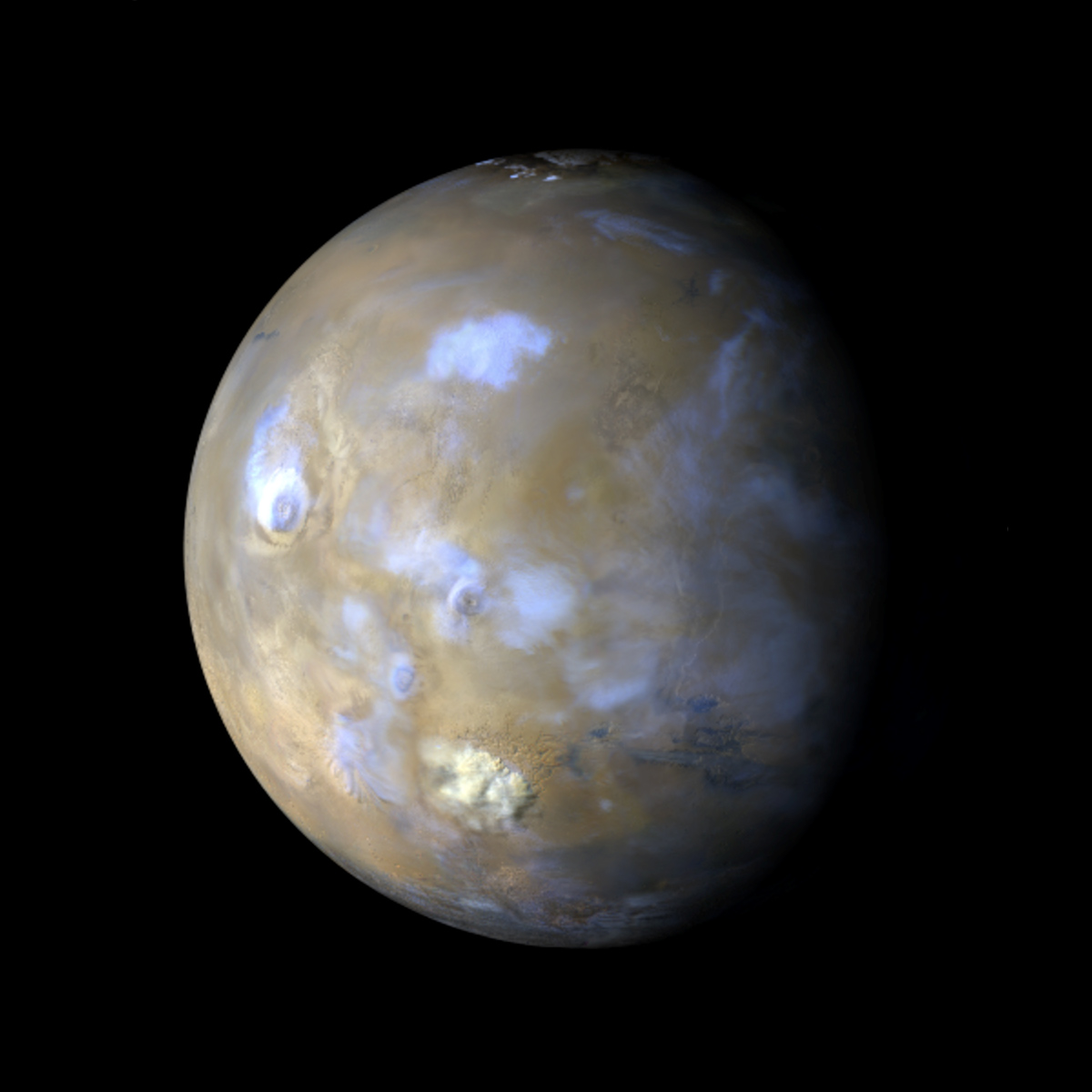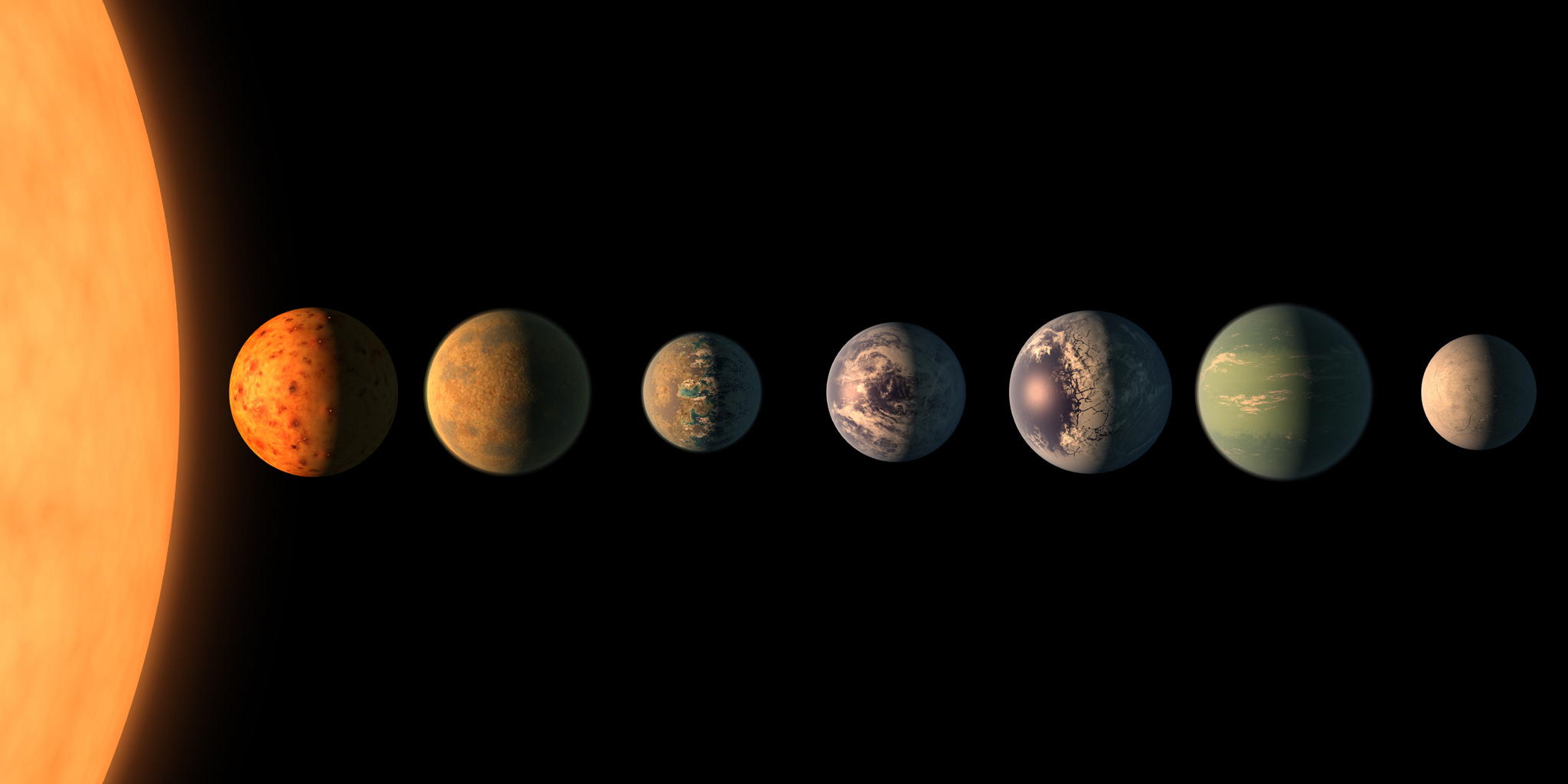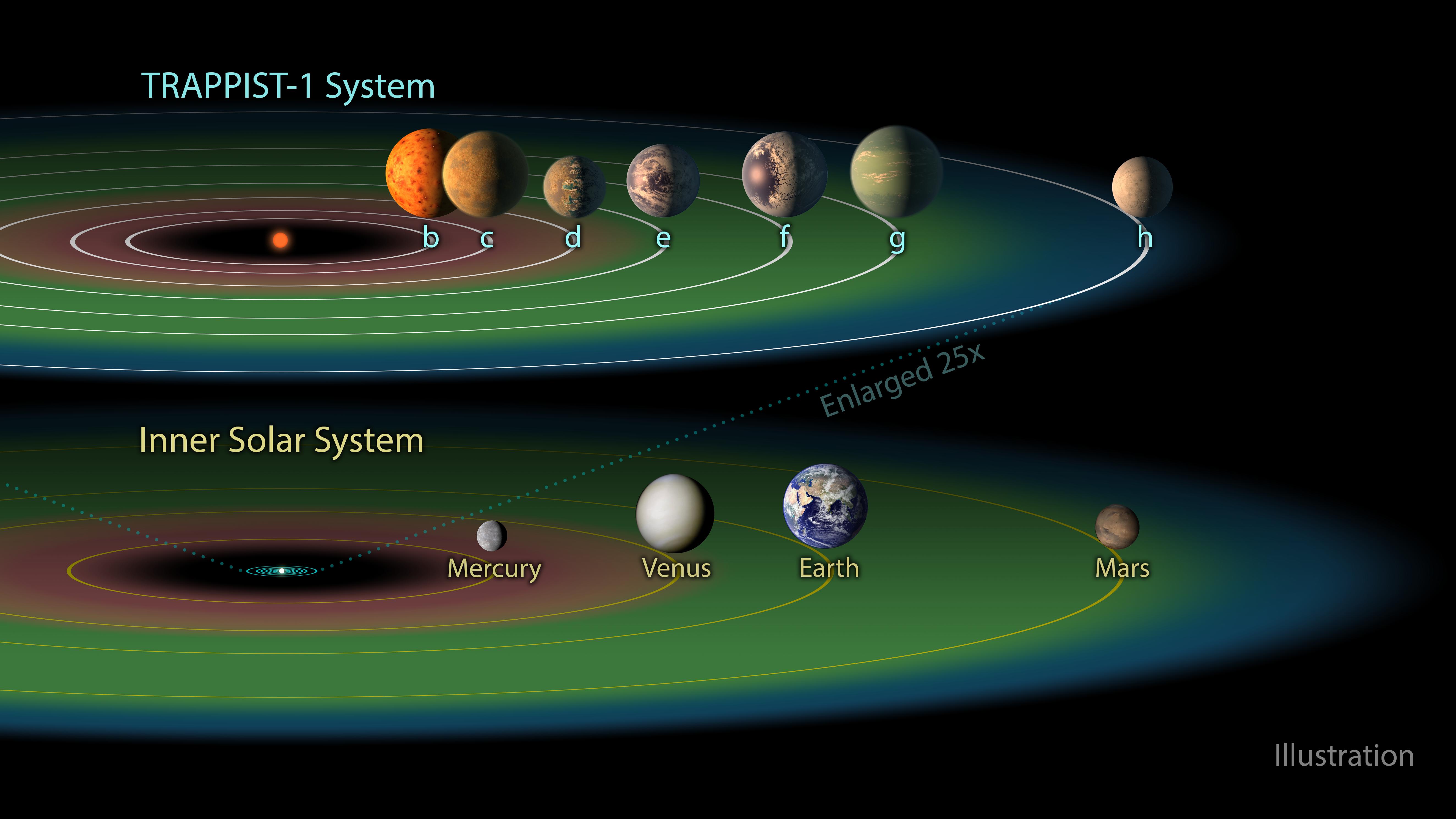
Our Sun
- Location on campus: Kirkwood Observatory
- The sun is 109 times larger than Earth.
- Fun fact: The core of the sun is about 27 million degrees Fahrenheit! Hot Hot Hot!!
Visualise the scale of different planet systems by exploring the old crescent and see how different systems are arranged. Along the way, learn about each of the planets in our solar system and discover what we know about the exoplanet system TRAPPIST-1!

Our solar system is made up of 8 planets, at least 5 dwarf planets, 176 moons, and over 150 million asteroids, all orbiting one sun!
Take a walk around campus to understand the scale of our vast solar system. Check out the map; some planets are farther away than you might expect! Then scroll down for more fun facts about the planets.
Do you have a favorite planet? Take a picture by the sign and share it with us on twitter (@iuastro) #SolarSystemWalk !










This artist’s concept shows what the TRAPPIST-1 planetary system may look like, based on available data about the planets’ diameters, masses and distances from the host star. The system has been revealed through observations from NASA’s Spitzer Space Telescope and the ground-based TRAPPIST (TRAnsiting Planets and PlanetesImals Small Telescope) telescope, as well as other ground-based observatories. The system was named for the TRAPPIST telescope.
The TRAPPIST-1 system was discovered in 2016 with the TRAPPIST telescope in Chile and is one of the best studied exoplanet systems we know about. There are 7 planets all orbiting a red dwarf star as their sun!
The TRAPPIST-1 system has 7 Earth-size planets that all orbit incredibly close to their star. In fact, the entire TRAPPIST-1 system could fit inside the orbit of Mercury!
